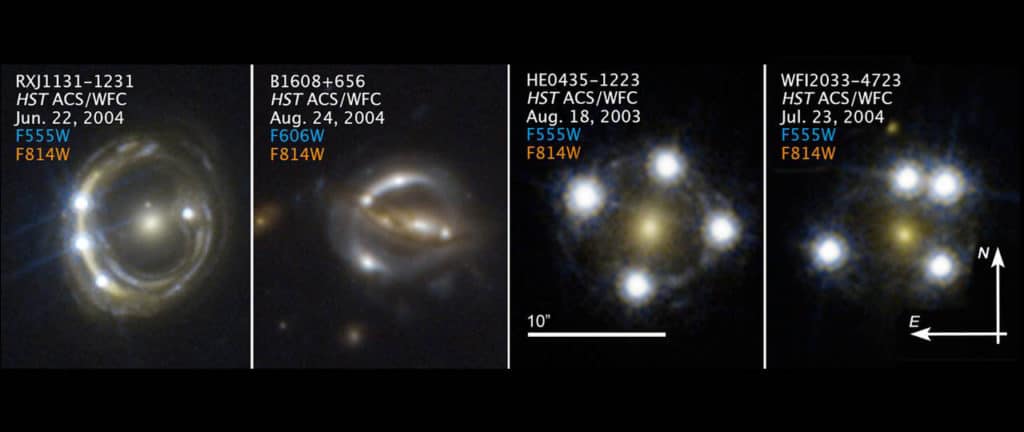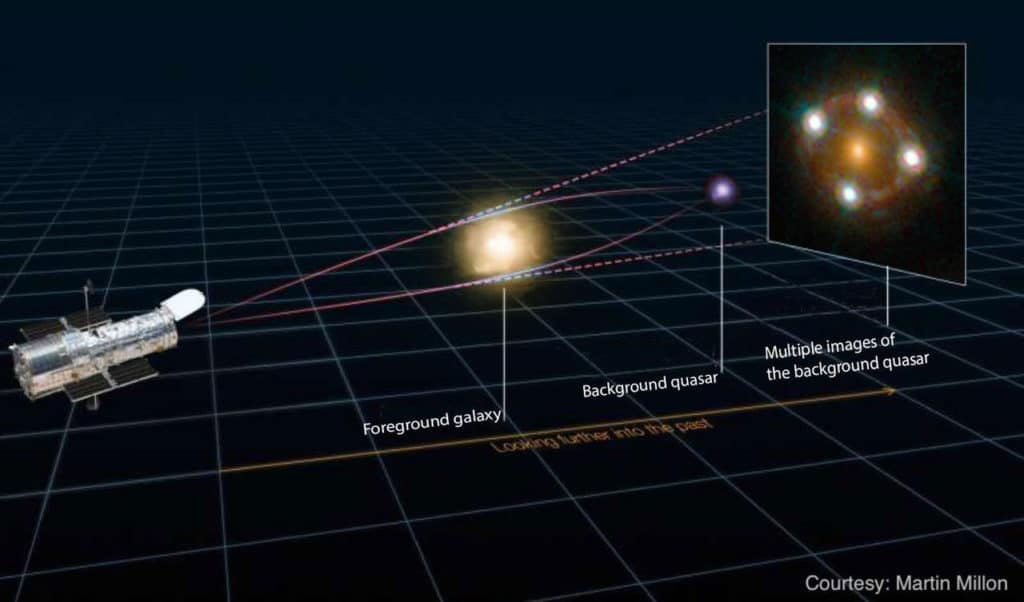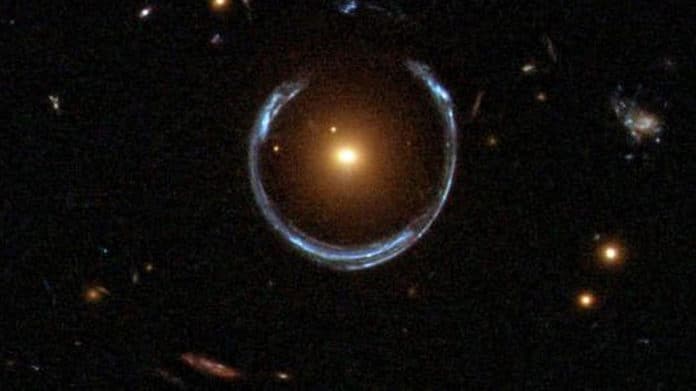The Hubble constant is a unit that portrays how quick the universe is expanding at various distances from a specific point in space. It is one of the cornerstones in our comprehension of the universe’s evolution— and scientists are buried in a discussion over its actual worth.
Recently, astronomers used cosmic lenses to determine the universe’s expansion rate and announced that the universe is expanding faster than expected. They measured the expansion rate – called the Hubble constant, or H0 – using gravitational lensing, a brand-new technique, utterly independent of any previous method.
The method reveals the most precise measurement yet, where the gravity of a foreground galaxy acts like a giant magnifying lens, amplifying and distorting light from background objects.

Scientists calculated a Hubble constant value of 73 kilometers per second per megaparsec (with 2.4% uncertainty). It means, for every additional 3.3 million light-years away, a galaxy is from Earth, it appears to be moving 73 kilometers per second faster, because of the universe’s expansion.
This new value varies significantly from the previous number of 67, which was based on observations by the European Space Agency’s Planck satellite on how the cosmos behaved more than 13 billion years ago.
For their latest measurement, the team used new data from the Hubble Space Telescope as well as from the ESO/MPG 2.2 m telescope at La Silla, ESO’s Very Large Telescope, wide-field imaging from the Dark Energy Survey, all three in Chile, and high-resolution Adaptive Optics imaging from Keck Observatory, Hawaii.
The team of astrophysicists is dubbed H0LiCOW (H0 Lenses in COSMOGRAIL’s Wellspring). COSMOGRAIL is the acronym for the Cosmological Monitoring of Gravitational Lenses, a large international project whose goal is monitoring gravitational lenses. “Wellspring” refers to the abundant supply of quasar lensing systems.

Sherry Suyu, professor at the Technical University of Munich (TUM), said, “While our first results already hinted at this high value for the Hubble constant, we are now more certain that there is indeed a systematic difference between the values at early and late cosmic times.”
Stefan Taubenberger, the team member at the MPA, further adds, “Our H0LiCOW value is significantly higher than Planck’s value – scientifically speaking, with more than 3-sigma significance. Combined with the SH0ES measurement, the significance increases even further.”
Using the Hubble telescope, the team observe the light from six faraway quasars. They observed how the light from each quasar was multiplied into four images by the gravity of a massive foreground galaxy.
Scientists found that the light rays from each quasar image take different paths to reach Earth. The pathway’s length relies upon the amount of matter that is distorting space along the apparent way to the quasar. To trace that pathway, the team monitors the flickering of the quasar’s light as its black hole eats up material. At the point when the light flickers, each lensed image lights up at an alternate time.
That flickering sequence enabled the team to quantify the time delays between each image as the lensed light travels along its path to Earth. For detailed comprehension, the team then used Hubble to create precise maps of the distribution of matter in each lensing galaxy. Doing this allowed scientists to reliably deduce the distances from the galaxy to the quasar, and from Earth to the galaxy and the background quasar. They then compared these values and measured the universe’s expansion rate.
Team member Kenneth Wong of the University of Tokyo’s Kavli Institute for the Physics and Mathematics of the Universe said, “The length of each time delay indicates how fast the universe is expanding. If the time delays are shorter, then the universe is expanding at a faster rate. If they are longer, then the expansion rate is slower.”
Frédéric Courbin, a researcher in EPFL’s LASTRO lab, and the founder and leader of COSMOGRAIL said, “One of the challenges we overcame was having dedicated monitoring programs through COSMOGRAIL to get time delays for several of these quasar lensing systems.”
Suyu said, “New mass modeling techniques were developed to measure a galaxy’s matter distribution, including models we designed to make use of the high-resolution Hubble imaging. The images enabled us to reconstruct, for example, the quasars’ host galaxies and to characterize the environment of the lens system, which affects the bending of light rays. The new mass modeling techniques, in combination with the time delays, help us to measure precise distances to the galaxies.”
Results presented at the 235th meeting of the American Astronomical Society in Honolulu, Hawaii, Jan 8, 2020
